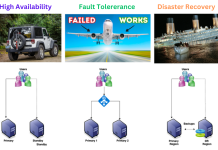“Cloud adoption is accelerating rapidly. Understanding the key cloud service providers and their offerings is crucial for organizations and cloud architects when selecting the right technology mix. The most popular platforms include Amazon Web Services (AWS), Microsoft Azure, and Google Cloud Platform (GCP), with IBM Cloud and Oracle Infrastructure Cloud (OCI) gaining traction. To make an informed decision, consider your organization’s size, goals, expected growth, and budget. Each cloud platform offers unique features and caters to different business models and sizes.”
From a cloud architect’s perspective, the selection process amongst leading cloud providers presents a nuanced decision. While AWS boasts a significant head start and extensive service portfolio, each platform offers unique strengths and weaknesses that must be carefully weighed against your organization’s specific needs.
Key considerations before choosing a Cloud provider:
- AWS: Unmatched in terms of service breadth and established market presence. However, navigating its vast offerings can be challenging.
- Azure: Seamless integration for heavily Microsoft-invested environments, potentially reducing complexity. Its service breadth may not match AWS, but targeted integrations can be invaluable.
- GCP: Stands out for its open-source commitment, diverse operating system support, and advanced analytics capabilities. Additionally, its integration with Google products is unmatched. However, its overall service breadth is still developing compared to larger players.
- IBM Cloud: Geared towards hybrid cloud solutions and enterprise-level needs, excelling in security and compliance. It boasts strong AI capabilities through IBM Watson and caters well to specific industries. However, its overall service breadth might be less extensive compared to the leaders.
- Oracle Cloud: Primarily focused on enterprise workloads and database management, offering competitive pricing and strong performance. Additionally, it integrates seamlessly with existing Oracle deployments. However, its broader service offering may not be as comprehensive as the other major players.
Ultimately, the “best” provider depends on various factors beyond just the platform itself. Carefully evaluating your existing infrastructure, budget, future technology roadmap, and specific workload requirements is crucial for selecting the optimal solution. Cloud architects must leverage their expertise to navigate this complex landscape and ensure the chosen platform best aligns with their organization’s long-term goals.
Choosing right Cloud Service Platform
For a Cloud architect, choosing the right cloud platform can be a challenging task, as there are many factors to consider, such as features, performance, pricing, scalability, reliability, security, and customer support. Each cloud platform has its own strengths and weaknesses in terms of the services and features they offer, as well as the global network of data centers, regions, and zones they have. Therefore, it is important to align the cloud platform with specific business needs and requirements.
Here are some of the main factors to consider when choosing a cloud platform:
- Cloud Platform Features: Each platform has its own strengths and weaknesses in terms of the services and features they offer. For example,
- AWS has an extensive list of features, some of which are absent from competitors, such as AWS Nitro Enclaves, AWS Eventbridge Scheduler and AWS OpenSearch.
- Azure excels in disaster recovery and scheduling via the Azure Logic App.
- Google Cloud offers Preemptible VMs, short-lived virtual machines that can run batch processes at a lower cost.
- IBM Cloud has a powerful Workload Scheduler and supports hybrid storage solutions.
- OCI has built-in support for non-fungible tokens (NFT) based on ERC-721 specification and offers OCI Confidential Computing, which encrypts data in use while it is being processed.
- Cloud Platform Performance: The performance of a cloud platform depends on various factors, such as the availability, reliability, scalability, and latency of the services. Each platform has its own global network of data centers, regions, and zones, which can affect the speed and quality of the service delivery. For example,
- Google Cloud has the largest network of any cloud provider, with over 140 points of presence across 200 countries.
- AWS has the most regions (25) and availability zones (80) of any cloud provider.
- Azure has the most data centers (60+) of any cloud provider.
- IBM Cloud has a presence in over 60 countries and supports hybrid and multi-cloud deployments.
- OCI has 29 regions and 58 availability domains, and offers a high-speed, low-latency connection with Azure in supported regions.
- Cloud Services Pricing: The pricing of a cloud platform depends on the type, size, and duration of the resources and services used. Each platform has its own pricing model, which can vary based on factors such as demand, location, and usage. For example,
- AWS charges per hour or per second, depending on the service.
- Azure charges per minute or per second, depending on the service.
- Google Cloud charges per second, with a minimum of one minute.
- IBM Cloud charges per hour or per month, depending on the service.
- OCI charges per hour or per month, depending on the service.
Additionally, each platform offers discounts, free tiers, and other incentives for customers to reduce their costs.
There is no definitive answer to which cloud platform is the best, as it depends on the specific needs and preferences of each customer. However, by comparing the features, performance, and pricing of each platform, Cloud architects can make an informed decision based on the specific organization’s requirements and budget.
Some additional factors to Evaluate Cloud Service Providers
- Certifications & Standards: Providers that comply with recognised standards and quality frameworks demonstrate an adherence to industry best practices and standards.
- Technologies & Service Roadmap: Providers that offer innovative and reliable technologies and have a clear and realistic service roadmap show their commitment to continuous improvement and customer satisfaction.
- Data Security, Data Governance and Business Policies: Providers that ensure data security, data governance and business policies are aligned with your organisation’s requirements and expectations demonstrate their professionalism and responsibility.
- Service Dependencies & Partnerships: Providers that have minimal or no service dependencies and partnerships with other cloud providers or third-party vendors show their flexibility and resilience.
- Contracts, Commercials & SLAs: Providers that offer fair and transparent contracts, commercials and SLAs show their accountability and trustworthiness.
- Reliability & Performance: Providers that offer high reliability and performance levels show their quality and efficiency.
- Migration Support, Vendor Lock in & Exit Planning: Providers that offer migration support, vendor lock in prevention and exit planning show their compatibility and sustainability.
- Business health & Company profile: Providers that have a strong business health and company profile show their credibility and reputation.
Comparing AWS, Azure, GCP, IBM, and OCI Cloud Providers
Choosing the right cloud provider can be a complex decision for any IT team, as each offers a vast array of services and caters to different needs. Remember, the best cloud provider is the one that best aligns with your specific needs and priorities. It’s recommended to conduct thorough research and consider factors like cost, services, security, and vendor lock-in before making a decision. Here’s a brief comparison of AWS, Azure, GCP, IBM, and OCI:
You can also visit this web page to see all the cloud services comparison in a single tabular format – Cloud Services Comparisons
Market Share:
- Leaders: AWS holds the dominant market share, followed by Azure.
- Challengers: GCP and IBM are established players with strong offerings.
- Emerging: OCI is gaining traction, particularly for enterprise customers.
Strengths:
- AWS: Broadest range of services, mature platform, strong global reach.
- Azure: Deep integration with Microsoft products, strong hybrid cloud offerings.
- GCP: Competitive pricing, leading AI and machine learning capabilities.
- IBM: Focus on enterprise security and compliance, hybrid cloud solutions.
- OCI: Competitive pricing, focus on enterprise performance and Oracle workloads.
Considerations:
- Cost: Pricing models vary, so careful evaluation based on your specific needs is crucial.
- Services: Choose the provider offering the specific services you require.
- Security: All providers offer robust security features, but compliance requirements might influence your choice.
- Vendor Lock-in: Consider potential challenges if you switch providers in the future.
How to prevent Cloud Vendor Lockings
Cloud Vendor lock-in is a situation where customers are locked into a single cloud product or service provider without being able to switch without incurring significant costs. Vendor lock-in can occur in cloud computing, where users may face technical, financial, or contractual barriers to migrate their workloads from one cloud provider to another.
To avoid or minimize the risk of cloud vendor lock-in, businesses should prioritize diversifying their cloud vendors portfolio to avoid over-reliance on a single provider. It’s crucial to choose vendors and solutions that adhere to open standards and ensure interoperability with other systems. Some of the best practices to avoid cloud vendor lock-in are:
- Negotiate both an entry and exit strategy upfront with your vendor. Make sure you understand the terms and conditions of the contract, the pricing model, the service level agreements, and the penalties for early termination. Engage with stakeholders to understand the specific risks and requirements related to cloud vendor lock-in.
- Analyze complex dependencies and avoid using proprietary technologies or features that are unique to a specific vendor. Instead, opt for open-source or widely supported technologies and features that can be easily ported to other platforms.
- Consider upgrading before migration. If your existing technology stack is outdated or incompatible with the cloud, you may need to upgrade or refactor your applications and data before moving them to the cloud. This can reduce the technical debt and increase the portability of your workloads.
- Consider hybrid or multi-cloud solutions. By using a combination of different cloud providers or a mix of cloud and on-premise solutions, you can reduce the dependency on a single vendor and leverage the best features and performance of each platform.
- Maintain a data governance framework and backup your data. Make sure you have a clear and consistent policy for managing, securing, and accessing your data across different cloud platforms. Also, ensure that you have a regular backup and recovery plan for your data in case of a vendor outage or failure.



